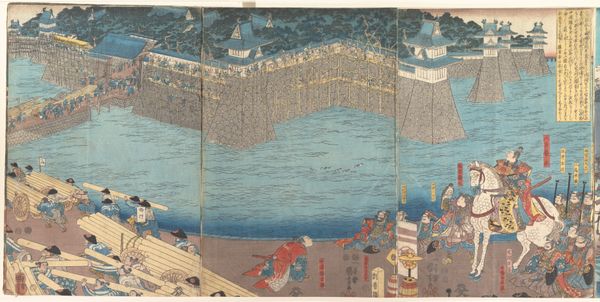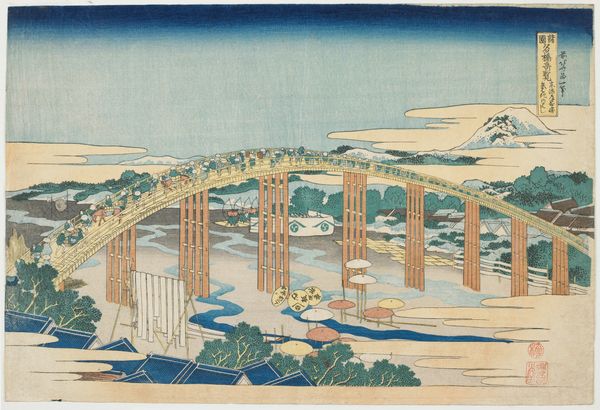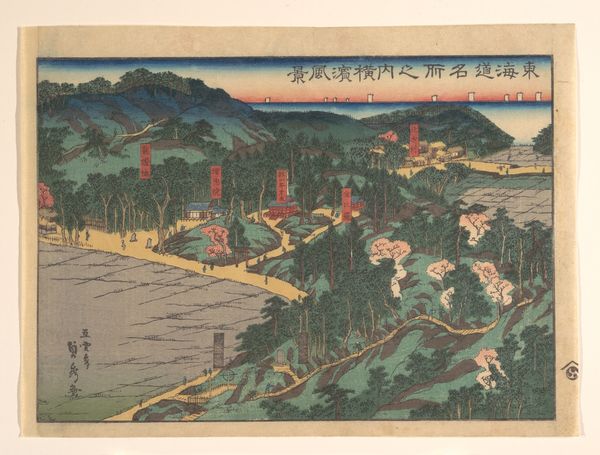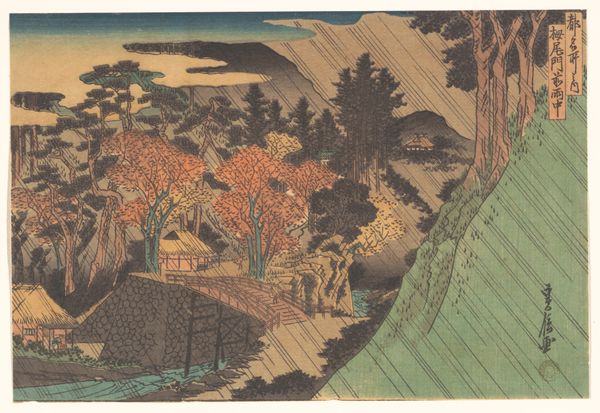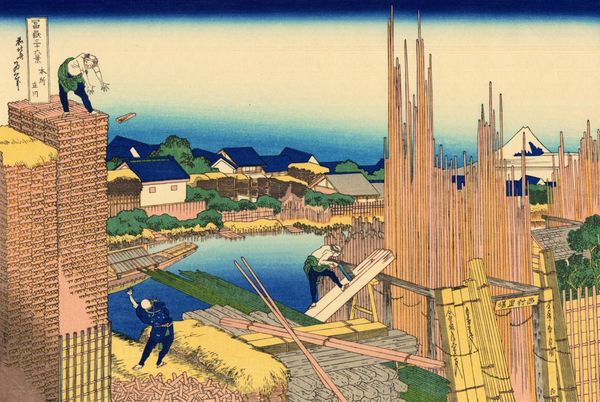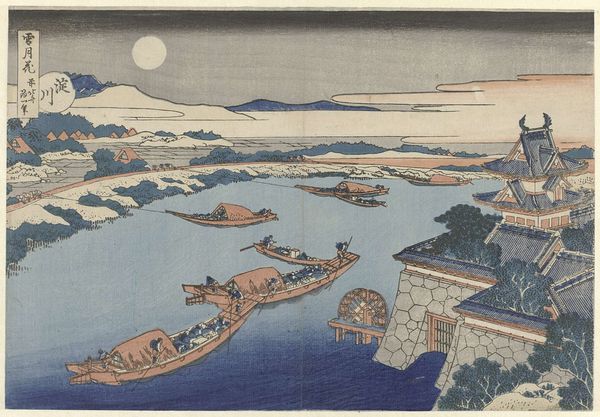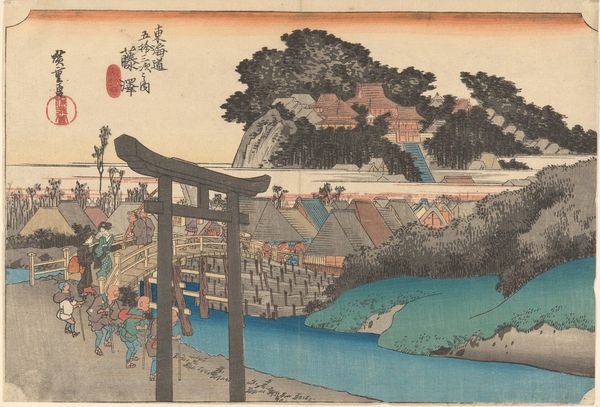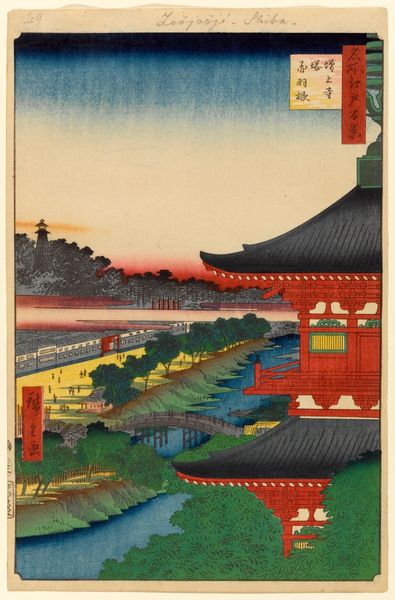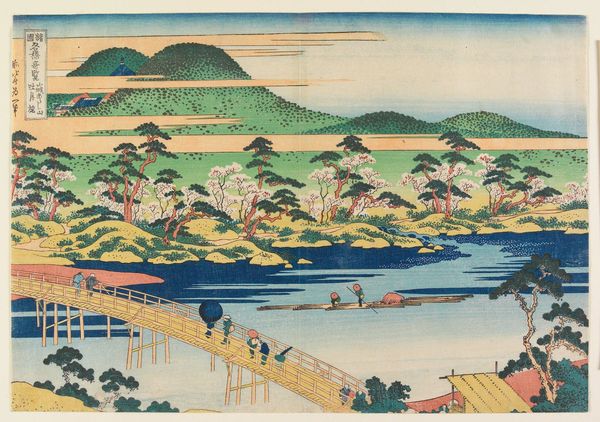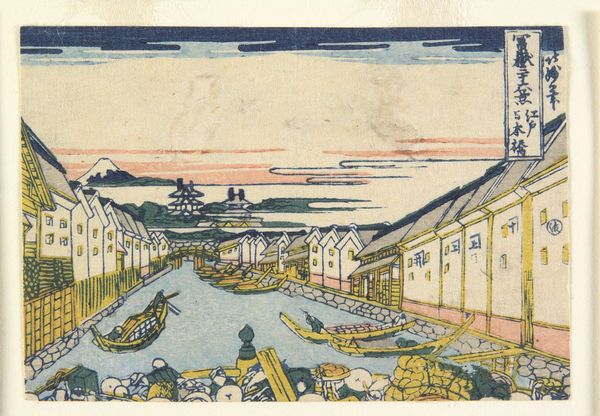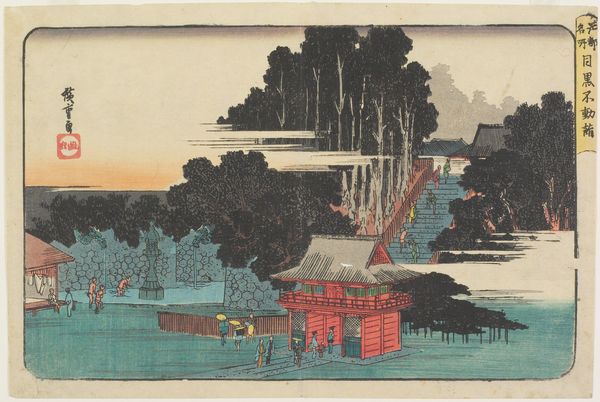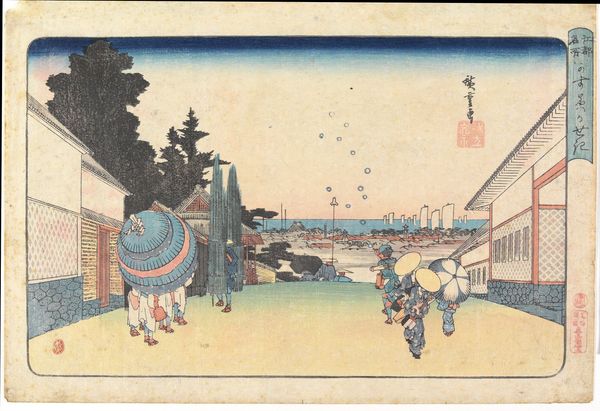
Dimensions: 9 3/4 × 14 3/4 in. (24.7 × 37.5 cm) (image, sheet, horizontal ōban)
Copyright: Public Domain
Katsushika Hokusai’s ‘Tatekawa in Honjo’ is a woodblock print, likely made in the 1830s. The print exemplifies the Ukiyo-e style that flourished during the Edo period. Woodblock printing demanded a complex division of labor, involving the artist, block carver, and printer, each a skilled artisan. The subject of this print is infrastructure. The print captures the raw energy of construction. We see the construction of a retaining wall, likely part of the city's flood control system. The closely fitted timbers and neatly stacked stones speak to skilled labor and the organization of urban development. The labor involved in the depicted construction – the cutting, hauling, and fitting of materials – is a key part of the print’s subject. In Hokusai’s view, labor is not a background element, but a central aspect of the landscape itself. By attending to these materials, processes, and social contexts, we recognize that art extends beyond aesthetic appreciation. It reflects social issues, and the value and meaning of art are intrinsically linked to the human experience, blurring the lines between fine art and craft.
Comments
No comments
Be the first to comment and join the conversation on the ultimate creative platform.
